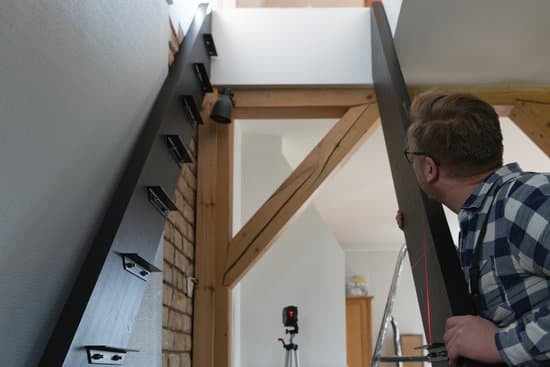When it comes to tax deductions, homeowners may be wondering if they can deduct any home improvements on their taxes. This article aims to provide a comprehensive understanding of tax deductions for home improvements and the specific rules and requirements that must be met.
By delving into what constitutes a qualifying home improvement, eligible expenses, and the documentation and record-keeping necessary, homeowners can maximize their potential tax benefits. Additionally, this article will explore limits and restrictions on tax deductions, compare tax credits versus tax deductions, address frequently asked questions, and provide resources for further information.
Homeowners who have made improvements to their properties may be eligible for tax deductions under certain circumstances. The Internal Revenue Service (IRS) has specific guidelines regarding what qualifies as a deductible home improvement expense. Understanding these guidelines is crucial in order to take advantage of any potential savings come tax season. By exploring the different types of qualifying home improvements and eligible expenses such as energy-efficient upgrades or medical modifications, homeowners can make informed decisions about maximizing their deductions.
Keeping accurate records and receipts is essential for claiming deductions on home improvements. This article emphasizes the importance of proper documentation and provides tips on organizing and storing relevant information.
Furthermore, it explains any limitations or restrictions on claiming tax deductions for home improvements to ensure homeowners are aware of when certain improvements may not be eligible. Comparing tax credits with tax deductions related to home improvements is also discussed to help homeowners understand the difference between these two concepts and how they impact overall tax savings.
With the complex nature of tax laws surrounding home improvement deductions, seeking professional advice is highly recommended. This section highlights the benefits of consulting with a tax professional who can offer personalized guidance based on an individual’s unique situation. Additionally, frequently asked questions regarding deducting the cost of a home office renovation or other common queries will be addressed concisely in this article along with providing helpful resources.
Qualifying Home Improvements for Tax Deductions
When it comes to tax deductions for home improvements, it’s important to understand what qualifies as an eligible expense. Certain types of home improvements can potentially qualify for tax deductions, providing homeowners with the opportunity to save money on their taxes. However, it’s essential to be aware of the specific rules and requirements set forth by the Internal Revenue Service (IRS) to ensure that you meet the necessary criteria.
To determine whether a home improvement is eligible for a tax deduction, there are several factors to consider. Generally, qualified home improvements are those that increase the value of your property, prolong its useful life, or adapt it for new uses. Allowable expenses can include energy-efficient upgrades or medical modifications made for accessibility purposes. However, aesthetic improvements that do not enhance the property’s value or function typically do not qualify.
- Energy-Efficient Upgrades: Installing solar panels, energy-efficient windows or doors, insulation, or a qualifying HVAC system may make you eligible for a tax deduction.
- Medical Modifications: Adding ramps, handrails, wider doorways, or modifying bathrooms and kitchens to accommodate individuals with disabilities may also qualify for a tax deduction.
In order to claim these deductions accurately and avoid any penalties during an audit, it is crucial to keep proper documentation and records of your home improvement expenses. This includes keeping receipts and invoices from contractors or suppliers as well as any relevant permits obtained during the improvement process. Having organized records not only helps support your deductions but also facilitates easy access to information if you need to provide evidence in the future.
Remember that each deduction has its limitations and restrictions. While some improvements may be eligible when used for personal residences, they may not be eligible when used for rental properties or second homes. Additionally, there may be income limits or maximum deduction amounts imposed by the IRS. It’s important to familiarize yourself with these limitations to ensure you claim the correct amount and do not face any penalties.
Overall, understanding the qualifying home improvements for tax deductions can help homeowners maximize their tax benefits. By making energy-efficient upgrades or necessary modifications for medical purposes and properly documenting these expenses, homeowners can potentially save money on their taxes. However, it’s always recommended to consult with a tax professional who can provide personalized guidance based on your specific circumstances and navigate the complexities of tax deductions effectively.
Understanding Tax Deductible Expenses
When it comes to tax deductions for home improvements, it is important to understand which expenses are eligible. Tax-deductible expenses refer to the costs of specific home improvement projects that can be deducted from your taxable income, thereby reducing the amount of tax you owe. The Internal Revenue Service (IRS) has specific guidelines regarding what expenses qualify for tax deductions, and being aware of these guidelines can help you maximize your potential tax savings.
Eligible expenses for tax deductions typically include improvements that add value to your home or make it more energy-efficient. Some common examples of qualifying home improvements may include:
- Energy-Efficient Upgrades: Investing in energy-efficient upgrades, such as solar panels, high-efficiency windows, or insulation, can often qualify for tax deductions. These improvements not only reduce your energy consumption and lower utility bills but also contribute to environmental sustainability.
- Medical Modifications: If you make modifications to your home for medical reasons, such as installing grab bars or ramps for mobility purposes or modifying bathroom facilities to accommodate a disability, these expenses may also qualify for tax deductions.
- Home Office Renovations: If you use a portion of your home exclusively for business purposes and undertake renovations like adding a separate entrance or renovating the space to improve its functionality as an office, these costs might be deductible. However, it is important to consult with a tax professional or refer to IRS guidelines regarding specific qualifications and limitations.
To ensure that you have proper documentation and proof of eligible expenses when claiming tax deductions for home improvements, it is advisable to keep accurate records and receipts. This documentation should include details such as invoices from contractors or suppliers, receipts for materials purchased, and any relevant permits obtained.
| Qualifying Home Improvements | Examples |
|---|---|
| Energy-Efficient Upgrades | Solar panels, high-efficiency windows, insulation |
| Medical Modifications | Grab bars, ramps, modified bathroom facilities for disabilities |
| Home Office Renovations* | Addition of separate entrance or renovations to improve functionality as an office |
Documentation and Record-Keeping
When it comes to claiming tax deductions for home improvements, one of the most crucial steps is ensuring proper documentation and record-keeping. The IRS requires taxpayers to provide evidence of their expenses in order to claim any deductions, so it is essential to keep accurate records and receipts.
To help you stay organized throughout the process, here are some tips on how to effectively document your home improvement expenses:
- Keep all receipts: Save all invoices, receipts, and payment confirmations related to your home improvement projects. This includes materials, labor costs, and any permits or inspections.
- Create a dedicated filing system: Set up a filing system specifically for your home improvement records. Keep physical copies in labeled folders or use digital storage solutions such as cloud-based platforms or organizing apps.
- Record detailed project information: Include key details about each project in your documentation, such as the purpose of the improvement, dates of work performed, and contractor information. This will be helpful if you need to reference specific projects in the future.
- Take photographs: Visual documentation can be invaluable when it comes to proving the completion of certain home improvements. Take before-and-after photos that clearly showcase the changes made.
In addition to keeping meticulous records, it is important to maintain these documents for an extended period of time. The general rule of thumb is to retain tax-related records for at least three years after filing your return. However, in certain situations-such as if you file a fraudulent return-the IRS may require you to keep records indefinitely.
By maintaining thorough documentation and accurate records for your home improvement expenses, you can ensure that you have the necessary evidence to support your tax deductions claim. This will not only help you comply with IRS requirements, but also maximize your potential tax savings.
Limits and Restrictions on Tax Deductions
While home improvements may potentially qualify for tax deductions, it is important to understand that there are limits and restrictions on claiming these deductions. It is crucial to be aware of these limitations to ensure compliance with tax laws and regulations. This section will provide an overview of the various restrictions and instances when certain improvements may not be eligible for tax deductions.
One key limitation to keep in mind is that the IRS considers home improvements as capital expenses, which means they generally cannot be deducted in full in the year they were incurred. Instead, these expenses can be depreciated over time through a process called capitalization. This means that you may only claim a portion of the improvement cost as a deduction each year, based on its expected useful life.
Additionally, it is important to note that not all types of home improvements are eligible for tax deductions. In order to qualify, the improvement must be considered substantial and add value to your property. Cosmetic upgrades or routine repairs, such as painting the walls or fixing a leaky faucet, typically do not meet the criteria for deductible home improvements.
Furthermore, any improvement that is strictly for personal use and does not have a business purpose may not be eligible for tax deductions. For example, if you install a swimming pool purely for recreational purposes, it would not qualify as a deductible expense. However, if you utilize part of your home exclusively for business purposes, such as a dedicated home office or studio space, you may be able to deduct expenses related to that specific area.
It is also worth mentioning that there may be restrictions on claiming tax deductions for certain energy-efficient upgrades or modifications. While many energy-saving improvements do qualify for federal tax credits (which differ from deductions), some state or local incentives are subject to limitations or phase-outs based on income levels or other factors.
Therefore, it is recommended to carefully review the specific requirements and guidelines provided by relevant authorities when considering eligibility for tax deductions on energy-efficient home improvements.
Tax Credits vs. Tax Deductions
When it comes to home improvements, understanding the difference between tax credits and tax deductions is crucial. Both concepts can provide financial benefits, but they work in different ways and offer varying levels of savings.
Tax Deductions
A tax deduction reduces the amount of your income that is subject to taxation. This means that if you have qualifying home improvement expenses, you can deduct those expenses from your taxable income, potentially lowering the amount of taxes you owe. It’s important to note that tax deductions typically only provide a percentage of savings based on your tax bracket.
To qualify for a tax deduction on home improvements, you must meet certain criteria set by the Internal Revenue Service (IRS). Generally, these improvements must add value to your home or prolong its useful life. Examples of qualifying projects include adding energy-efficient upgrades such as solar panels or making medical modifications like installing ramps or grab bars.
Tax Credits
On the other hand, a tax credit directly reduces the amount of taxes you owe on a dollar-for-dollar basis. This means that if you have eligible home improvement expenses that qualify for a specific tax credit, you can subtract the full value of the credit from the total amount of taxes due to the IRS.
Tax credits for home improvements are often tied to energy efficiency and renewable energy initiatives. For example, individuals who install solar panels or geothermal heat pumps may be eligible for federal energy tax credits. These credits incentivize homeowners to adopt environmentally-friendly practices and can result in significant savings.
It’s important to research and determine which specific tax credits are available and applicable to your particular situation before undertaking any eligible home improvement projects. Consulting with a tax professional specializing in this area can help ensure that you fully understand all your options and take advantage of all available benefits. Remember that both deductions and credits have their own unique requirements and rules, so careful planning is essential to maximize your tax savings.
Seeking Professional Advice
When it comes to navigating the complexities of tax deductions for home improvements, it can be highly beneficial to seek professional advice. Consulting with a tax professional can provide personalized guidance and help you maximize your tax benefits.
A tax professional, such as a CPA or tax attorney, has in-depth knowledge of the tax code and can help you understand the specific rules and requirements for claiming deductions on home improvements. They can analyze your individual circumstances and determine which expenses are eligible for deductions, ensuring that you don’t miss out on any potential savings.
Furthermore, a tax professional can assist you in analyzing your documentation and record-keeping practices. They can review your receipts, invoices, and other relevant documents to ensure they are organized and meet the necessary requirements for substantiating your claimed expenses. This expertise can save you time and effort in gathering the necessary paperwork while minimizing the risk of an audit.
In addition to providing guidance on deductibility and record-keeping, a tax professional can also help you explore alternative strategies for optimizing your tax savings. They may suggest strategies such as bundling multiple qualifying projects into a single year or considering reclassifying certain expenses to maximize deductions. By working with an expert who is up-to-date with current tax laws and regulations, you can potentially uncover additional opportunities for increased savings.
Overall, seeking professional advice when it comes to claiming deductions for home improvements offers numerous advantages. From providing personalized guidance to assisting with documentation and offering strategies for maximizing savings, a tax professional can be an invaluable resource in helping you navigate the complexities of this area of taxation.
| Advantages | Considerations |
|---|---|
| Personalized guidance tailored to your specific circumstances. | The cost of hiring a tax professional. |
| Expert analysis of documentation and record-keeping to ensure compliance. | The need to share sensitive financial information with the tax professional. |
| Exploration of alternative strategies for optimizing tax savings. | Reliance on the competence and expertise of the tax professional. |
Frequently Asked Questions (FAQs)
One frequently asked question is whether the cost of a home office renovation can be deducted on taxes. The answer depends on certain factors. If you use a portion of your home exclusively for business purposes and it meets the criteria set by the IRS, you may be able to deduct some of the expenses related to renovating your home office. However, it’s important to note that only the portion used exclusively for business purposes qualifies for deductions.
To determine if you are eligible for this deduction, you need to calculate what percentage of your home is used solely as a home office. For example, if your home office accounts for 10% of your total square footage, you could potentially deduct 10% of certain renovation expenses, such as painting or installing new flooring. It’s essential to keep detailed records and documentation to support these deductions in case they are audited by the IRS.
It’s worth noting that certain improvements may not be fully deductible in one tax year but can be depreciated over time. Additionally, there may be limitations based on the nature of the renovation project and whether it adds value to your home beyond just serving as a dedicated work area. It is recommended that you consult with a tax professional who specializes in home-related deductions and renovations to ensure compliance with all rules and regulations.
For more specific guidance on deducting the cost of a home office renovation, refer to IRS Publication 587: Business Use of Your Home. This publication provides comprehensive information on qualifying criteria, eligible expenses, depreciation rules, and other relevant details pertaining to claiming deductions for using part of your residence as a home office.
It’s important to remember that tax laws can change over time so consulting with a qualified tax professional is always a wise decision. They can provide personalized advice based on your unique circumstances and help you maximize your tax savings while staying in compliance with all regulations and requirements.
Conclusion
Throughout this article, we have discussed various aspects related to qualifying home improvements for tax deductions. We explored what constitutes a qualifying home improvement and provided an overview of eligible expenses, such as energy-efficient upgrades or medical modifications. Understanding the breakdown of eligible expenses is essential to accurately claim deductions and avoid any potential discrepancies with the IRS.
Furthermore, we highlighted the significance of proper documentation and record-keeping for home improvement expenses. Keeping accurate records and storing relevant receipts is vital in substantiating your deductions during an audit. Additionally, we delved into the limits and restrictions on tax deductions for home improvements to ensure that readers are aware of any constraints when claiming these benefits.
Lastly, we emphasized seeking professional advice to navigate the complexities of tax deductions effectively. Consulting with a tax professional can provide personalized guidance based on your unique circumstances and help you make informed decisions regarding your home improvements and potential tax savings.
By understanding the intricacies of tax deductions for home improvements, organizing relevant documentation, and seeking expert assistance when needed, individuals can optimize their tax benefits. It is recommended to explore the many available resources provided by the IRS or consult a tax professional for further information regarding specific eligibility criteria or deductible expenses related to your situation.
Remember that while this article provides a comprehensive overview of maximizing tax benefits for home improvements, always consult a qualified tax professional or accountant before making any decisions or filing your taxes. With careful planning and adherence to IRS guidelines, you can make the most out of possible deductions while improving your living space at the same time.
Additional Resources and References
In conclusion, maximizing tax benefits for home improvements requires a thorough understanding of the specific rules and requirements surrounding tax deductions. By qualifying for tax deductions, homeowners can potentially save a significant amount of money on their taxes. It is important to remember that not all home improvements are eligible for deductions, so it is crucial to carefully review what qualifies and what does not.
To optimize tax savings, accurate documentation and record-keeping are paramount. Keeping track of receipts and other relevant documents will help ensure that you have the necessary evidence to support your claims. Organizing this information in a systematic manner will make it easier to access when needed.
While some limitations and restrictions exist, exploring potential tax credits in addition to deductions can further enhance your savings. Tax credits offer a dollar-for-dollar reduction in the total amount of taxes owed, which can significantly impact your overall tax liability.
It is worth noting that seeking professional advice from a qualified tax professional is highly recommended. They can provide personalized guidance based on your unique situation and help navigate the complexities of tax deductions. With their expertise, you can confidently pursue and optimize every available deduction.
Frequently Asked Questions
What home improvements are tax deductible IRS?
The IRS allows for certain home improvements to be tax deductible, but it is important to note that not all home improvements qualify. Generally, home improvements that add value, such as a new roof or an upgraded HVAC system, can potentially be considered tax deductible. However, it is important to meet certain requirements set by the IRS.
For example, the improvements must be substantial and not just routine repairs or maintenance. Additionally, the home improvement expenses must exceed a certain threshold before they can be deducted. It is always advisable to consult with a tax professional or refer to the IRS guidelines for specific details on which home improvements may be tax deductible.
What are the tax breaks for home improvements in 2023?
As of 2023, exact information regarding tax breaks for home improvements is not available since it pertains to the future scenario beyond current knowledge. Tax laws and regulations are subject to change over time, and new provisions may be introduced by the government that could impact homeowners’ ability to claim deductions specifically related to home improvements.
Therefore, it is crucial for individuals planning home improvements to stay updated with the latest tax laws or consult a tax professional who can provide accurate guidance based on the specific year in question.
Can you write off new flooring on your taxes?
The ability to write off new flooring expenses on your taxes depends on various factors and circumstances. Generally speaking, if the new flooring qualifies as a necessary improvement required due to medical reasons or disability accommodations for the homeowner or other household members with relevant medical conditions, it may be possible to deduct these costs as medical expenses on your taxes under certain circumstances specified by the IRS guidelines.
However, if the new flooring is solely for aesthetic purposes or does not meet the criteria outlined by the IRS for medical expense deductions, it would typically not qualify as a direct write-off on personal income taxes. It is advisable to seek professional advice from a tax expert who can assess your specific situation in order to determine potential deductibility of new flooring expenses.

I’m thrilled to have you here as a part of the Remodeling Top community. This is where my journey as an architect and remodeling enthusiast intersects with your passion for transforming houses into dream homes.





